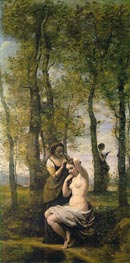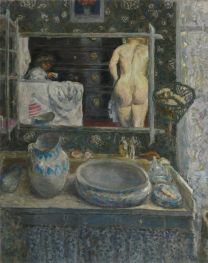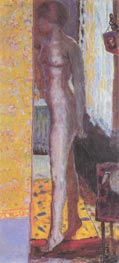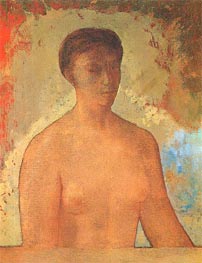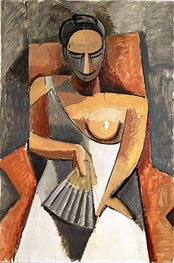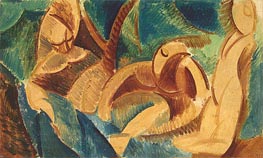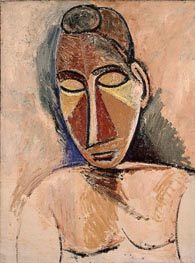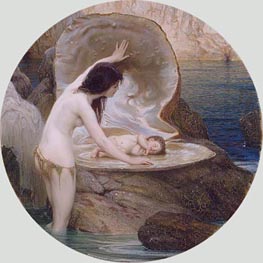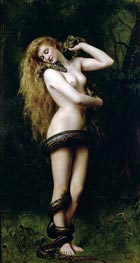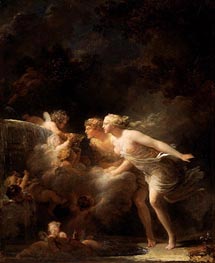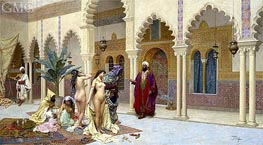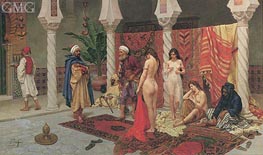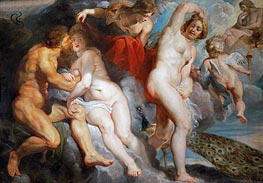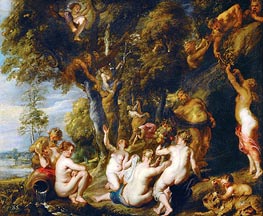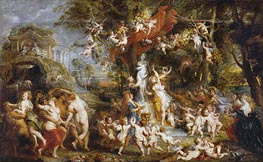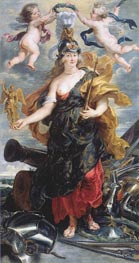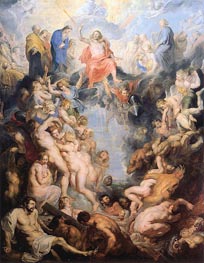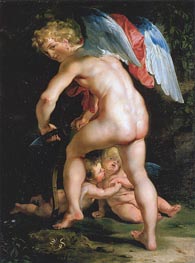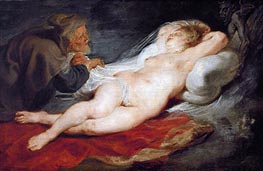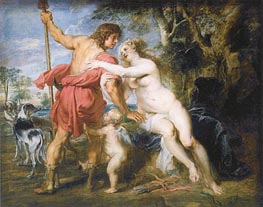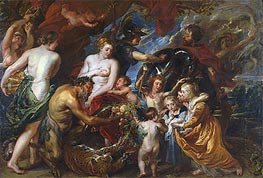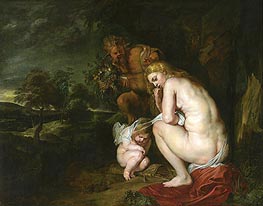Akt Painting Reproductions - Page 35
The history of nude painting can be traced back to the ancient civilizations of Greece and Rome, where the naked human form was frequently depicted in art for religious, cultural, and aesthetic purposes. During the Renaissance, artists such as Michelangelo and Botticelli continued this tradition, creating masterpieces that celebrated the beauty of the human form.
In the 19th century, the genre evolved with the advent of modernism, and many artists, such as Edouard Manet, used the naked body as a means of challenging societal norms and pushing boundaries. The 20th century saw further experimentation and exploration of the genre, with artists such as Pablo Picasso and Amedeo Modigliani incorporating elements of cubism and expressionism into their nudes.
The depiction of nudity in art has also been subject to moral, cultural, and political controversy throughout history. During the Victorian era, for example, nudity was often deemed inappropriate and was typically only depicted in a limited and idealized manner. In response, some artists sought to challenge these norms by creating more realistic and daring nudes that subverted traditional norms and expectations.
In recent years, the genre of nude painting has also become increasingly diverse, reflecting the changing attitudes and values of society. For instance, there has been a growing interest in representing the naked body in a more inclusive and diverse manner, with a greater emphasis on body positivity and representation of a wider range of body types.
Despite these changes, the genre of nude painting continues to be shaped by the cultural and political context of each era, reflecting the attitudes and values of the time. Nevertheless, the naked form remains a powerful and enduring subject for artists and art lovers alike, providing a rich and diverse canvas for exploring the human experience.
In the 19th century, the genre evolved with the advent of modernism, and many artists, such as Edouard Manet, used the naked body as a means of challenging societal norms and pushing boundaries. The 20th century saw further experimentation and exploration of the genre, with artists such as Pablo Picasso and Amedeo Modigliani incorporating elements of cubism and expressionism into their nudes.
The depiction of nudity in art has also been subject to moral, cultural, and political controversy throughout history. During the Victorian era, for example, nudity was often deemed inappropriate and was typically only depicted in a limited and idealized manner. In response, some artists sought to challenge these norms by creating more realistic and daring nudes that subverted traditional norms and expectations.
In recent years, the genre of nude painting has also become increasingly diverse, reflecting the changing attitudes and values of society. For instance, there has been a growing interest in representing the naked body in a more inclusive and diverse manner, with a greater emphasis on body positivity and representation of a wider range of body types.
Despite these changes, the genre of nude painting continues to be shaped by the cultural and political context of each era, reflecting the attitudes and values of the time. Nevertheless, the naked form remains a powerful and enduring subject for artists and art lovers alike, providing a rich and diverse canvas for exploring the human experience.
page 35 of 44
SKU: COR-3665
Jean-Baptiste-Camille Corot
Original Size: unknown
Private Collection
Jean-Baptiste-Camille Corot
Original Size: unknown
Private Collection
SKU: COR-3650
Jean-Baptiste-Camille Corot
Original Size: unknown
Private Collection
Jean-Baptiste-Camille Corot
Original Size: unknown
Private Collection
SKU: BON-3627
Pierre Bonnard
Original Size: 120 x 97 cm
Pushkin Museum of Fine Arts Moscow Russia
Pierre Bonnard
Original Size: 120 x 97 cm
Pushkin Museum of Fine Arts Moscow Russia
SKU: BON-3617
Pierre Bonnard
Original Size: unknown
Private Collection
Pierre Bonnard
Original Size: unknown
Private Collection
SKU: RED-3576
Odilon Redon
Original Size: unknown
Musee d'Orsay Paris France
Odilon Redon
Original Size: unknown
Musee d'Orsay Paris France
SKU: WJA-3557
Jean Antoine Watteau
Original Size: 14 x 17.1 cm
Norton Simon Museum of Art Pasadena USA
Jean Antoine Watteau
Original Size: 14 x 17.1 cm
Norton Simon Museum of Art Pasadena USA
SKU: PPR-3550
Pablo Picasso
Original Size: 150 x 100 cm
The State Hermitage Museum St. Petersburg Russia
Pablo Picasso
Original Size: 150 x 100 cm
The State Hermitage Museum St. Petersburg Russia
SKU: PPR-3549
Pablo Picasso
Original Size: 39 x 62 cm
The State Hermitage Museum St. Petersburg Russia
Pablo Picasso
Original Size: 39 x 62 cm
The State Hermitage Museum St. Petersburg Russia
SKU: PPR-3542
Pablo Picasso
Original Size: 61 x 46.5 cm
The State Hermitage Museum St. Petersburg Russia
Pablo Picasso
Original Size: 61 x 46.5 cm
The State Hermitage Museum St. Petersburg Russia
SKU: DHJ-3526
Herbert James Draper
Original Size: 68.5 x 68.5 cm
Manchester Art Gallery Manchester United Kingdom
Herbert James Draper
Original Size: 68.5 x 68.5 cm
Manchester Art Gallery Manchester United Kingdom
SKU: HJC-3525
John Collier
Original Size: 194 x 104 cm
The Atkinson Art Gallery Southport United Kingdom
John Collier
Original Size: 194 x 104 cm
The Atkinson Art Gallery Southport United Kingdom
SKU: FJH-3524
Jean-Honore Fragonard
Original Size: 62.2 x 51.4 cm
J. Paul Getty Museum Los Angeles USA
Jean-Honore Fragonard
Original Size: 62.2 x 51.4 cm
J. Paul Getty Museum Los Angeles USA
SKU: RGA-3502
Giulio Rosati
Original Size: unknown
Private Collection
Giulio Rosati
Original Size: unknown
Private Collection
SKU: RGA-3501
Giulio Rosati
Original Size: 61 x 101 cm
Private Collection
Giulio Rosati
Original Size: 61 x 101 cm
Private Collection
Ixion, King of the Lapiths, Deceived by Juno c.1615
Peter Paul Rubens
Oil Painting
$3194
$3194
Canvas Print
$51.72
$51.72
SKU: RPP-3500
Peter Paul Rubens
Original Size: 175 x 145 cm
Louvre Museum Paris France
Peter Paul Rubens
Original Size: 175 x 145 cm
Louvre Museum Paris France
SKU: RPP-3499
Peter Paul Rubens
Original Size: 136 x 165 cm
Prado Museum Madrid Spain
Peter Paul Rubens
Original Size: 136 x 165 cm
Prado Museum Madrid Spain
SKU: RPP-3496
Peter Paul Rubens
Original Size: 217 x 350 cm
Kunsthistorisches Museum Vienna Austria
Peter Paul Rubens
Original Size: 217 x 350 cm
Kunsthistorisches Museum Vienna Austria
SKU: RPP-3490
Peter Paul Rubens
Original Size: 276 x 149 cm
Louvre Museum Paris France
Peter Paul Rubens
Original Size: 276 x 149 cm
Louvre Museum Paris France
SKU: RPP-3486
Peter Paul Rubens
Original Size: 608.5 x 463.5 cm
Alte Pinakothek Munich Germany
Peter Paul Rubens
Original Size: 608.5 x 463.5 cm
Alte Pinakothek Munich Germany
SKU: RPP-3484
Peter Paul Rubens
Original Size: 142.5 x 107 cm
Alte Pinakothek Munich Germany
Peter Paul Rubens
Original Size: 142.5 x 107 cm
Alte Pinakothek Munich Germany
SKU: RPP-3483
Peter Paul Rubens
Original Size: 43 x 66 cm
Kunsthistorisches Museum Vienna Austria
Peter Paul Rubens
Original Size: 43 x 66 cm
Kunsthistorisches Museum Vienna Austria
SKU: RPP-3482
Peter Paul Rubens
Original Size: 197.5 x 243 cm
Metropolitan Museum of Art New York USA
Peter Paul Rubens
Original Size: 197.5 x 243 cm
Metropolitan Museum of Art New York USA
Minerva Protects Pax from Mars (Peace and War) c.1629/30
Peter Paul Rubens
Oil Painting
$11037
$11037
Canvas Print
$50.23
$50.23
SKU: RPP-3479
Peter Paul Rubens
Original Size: 203.5 x 298 cm
National Gallery London United Kingdom
Peter Paul Rubens
Original Size: 203.5 x 298 cm
National Gallery London United Kingdom
SKU: RPP-3478
Peter Paul Rubens
Original Size: 142 x 184 cm
Koninklijk Royal Museum of Fine Arts Antwerp Belgium
Peter Paul Rubens
Original Size: 142 x 184 cm
Koninklijk Royal Museum of Fine Arts Antwerp Belgium
